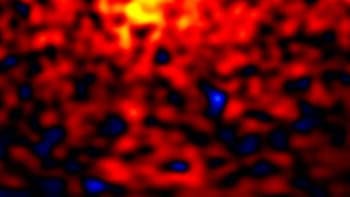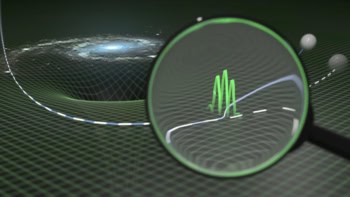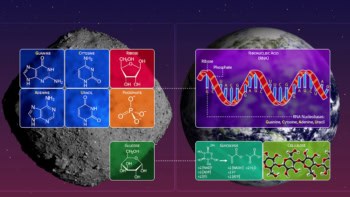Radio astronomers may have found the first ever galaxy that is made almost entirely of dark matter. The "dark galaxy", which lies in the Virgo cluster about 50 million light years away, rotates in the same way as an ordinary galaxy but does not contain any stars (R Minchin et al. 2005 Astrophys. J. 622 L21-L24).

Dark matter was originally proposed to explain why galaxies rotate much faster than can be explained by the amount of visible matter they contain. This mysterious form of matter does not emit or absorb electromagnetic radiation — hence the name “dark” — and can only be detected by its gravitational influence on ordinary matter. Overall the universe is thought to contain about 5% of ordinary matter, 25% of dark matter and 70% of dark energy. Although various types of new particle have been proposed to explain the dark matter, the nature of the dark energy remains a complete mystery.
Recent advances in radio astronomy have allowed researchers to carry out large surveys of the amount of hydrogen in various parts of the universe. This allows them to detect astrophysical structures by their gas content alone, rather than by the light emitted by the stars they contain. This has opened up the possibility of finding isolated clouds of intergalactic gas with no stars.
Last year, a team led by astronomers at Cardiff University in the UK carried out a survey of the Virgo cluster of galaxies using the Lovell telescope at Jodrell Bank Observatory. The team detected a new galaxy called VIRGOHI21 that contained a cloud of hydrogen atoms 108 times heavier than the Sun. Now, Robert Minchin and colleagues at Cardiff, together with co-workers in Italy, France and Australia, have studied this galaxy in more detail.
Based on the speed at which it is rotating Minchin and co-workers calculate that VIRGOHI21 is a thousand times more massive than can be accounted for by the amount of hydrogen it contains. Moreover, if it was an ordinary galaxy it should be bright enough to detect at optical wavelengths.
Although similar dark objects have been detected before, they were later found to contain stars or debris from nearby visible galaxies. In contrast, VIRGOHI21 contains no stars, as confirmed by observations with the Isaac Newton optical telescope in La Palma. “The most likely explanation is that the galaxy is made of dark matter,” says Minchin.




